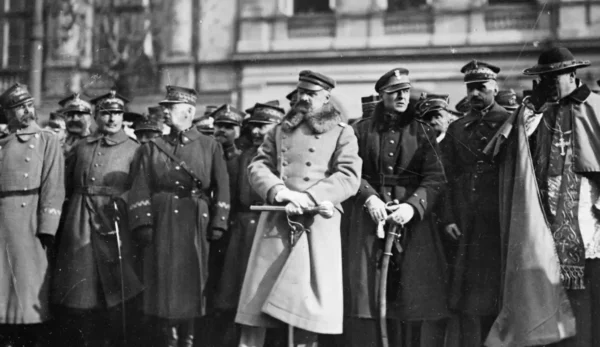Here is how Hungarians saved Poland from total annihilation

The historic friendship between Poland and Hungary stands as one of the oldest alliances in Central Europe, forged through mutual support in pivotal moments. In the 17th century, Poles played a crucial role in breaking the Ottoman rule over Hungary, reciprocated later in the 19th century when Hungarians supported Poland’s fight for freedom. A remarkable chapter unfolded in 1920 when Hungary played an important role in saving Poland from Soviet forces at the gates of Warsaw.
Pole and Hungarian brothers be
The bonds between Pole and Hungarian are deeply woven in history. This unique relationship has roots in the Middle Ages, where the exchange of kings and queens solidified our connection. If it had not been for Hungarian King Louis the Great’s daughter, Hedvig, maybe the belligerent Lithuanians would have annihilated Medieval Poland. Instead, Hedvig married the Lithuanian leader, and Poland became one of Europe’s great powers. The Transylvanian prince István Báthory (1575-1586) is still considered one of the greatest Polish national heroes. Streets were named after him, statues were erected to commemorate him and even a university bore his name.
The legacy continued into the 18th and 19th centuries when Hungary provided shelter and aid to Polish refugees, who, in turn, stood alongside Hungary in the struggle for freedom in 1848-49. In the aftermath of World War I, as Poland emerged anew, only Hungary extended a helping hand in its life-or-death war against the Soviets.
Poland vs the Soviets
Not many people know that the armistices of 1918 October-November did not mean the end of the territorial-national conflicts stirred up by the First World War in Central and Eastern Europe. For instance, Hungary was one of the victims since, despite the armistice, Serbian, Romanian and Czechoslovak troops occupied much of its territories.
Border disputes and armed conflicts broke out in many parts of Europe. One of the most significant clashes erupted between the Soviets and Poland. The stakes were high: Lenin wanted to revolutionise both Berlin and Paris. However, the road to Paris led through Warsaw. Meanwhile, the Poles led by General Józef Pilsudski, aimed to push their borders farther to the East. The original borders of Poles excluded millions of Polish nationals and would have made them live under Russian-Soviet rule.
Only Hungary helped
Following minor Polish victories, the Soviet army gained momentum and won battles one after the other against the enthusiastic but inexperienced Poles. Warsaw cried for help, but Western European ears remained deaf.
The country faced a border dispute with Czechoslovakia, Germany lost the war and territories, while the British were paralysed by massive strikes. Although the Entente powers had already imposed the Trianon Peace Treaty on Hungary, the Hungarian governments sensed the life-or-death struggle of the Pole. Therefore, they decided to help despite their modest possibilities.
In Csepel, Budapest’s 21st district, the Manfréd Weiss Works, Hungary’s prominent factory, became a hub of feverish activity. Despite being looted by Romanian soldiers in 1919, the factory worked tirelessly, producing approximately 20-22 million rounds of Hungarian ammunition by 12 August 1920. This vital support reached Polish troops defending Warsaw, turning the tide against the Soviet advance. That was a decisive help since experts say an average Polish soldier had only seven cartridges left by then. Against the brilliant Marshal Tukhachevsky, that would have meant nothing.
The Poles were grateful for Hungary’s help
Józef Pilsudski’s ingenious strategy, attacking instead of defending Warsaw, proved successful. Thanks to a stroke of luck involving Stalin’s orders, part of the Soviet cavalry occupied Lemberg (Lviv) instead of aiding the main Soviet forces. Pilsudski’s units surrounded and disarmed 150,000 Russian soldiers, securing Poland’s survival and territorial expansion to the East.
The enduring gratitude of the Poles towards Hungary’s assistance resonates through history. In 1956, during the Hungarian revolution and freedom fight crushed by Soviet troops, Poland reciprocated with solidarity, sending blood, assistance and even donations of children’s toys to support the Hungarian cause. This shared history stands as a testament to the strength and resilience of the Polish-Hungarian friendship.
Read also:
- Budapest’s long-forgotten bridge right next to the Parliament – Read more HERE
- The Hungarian prime minister who was hanged but did not die – Click HERE for more
Source:



and today… when Ukraine needs help against the same Russians?
Thanks Hungary… you show your true color rotten through and through collaborators with Putin and Xi.
Yes, I agree that our Hungarian brethren played a significant role in the victory of 1920. God Bless Hungary and Poland.
However, it is unfortunate that there is no mention of Divine Assistance. Here is more about this extraordinary event in my article:
https://catholicjournal.us/2020/07/30/the-miracle-on-the-vistula-rediscovered/